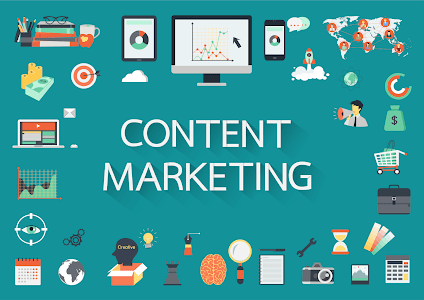Unleashing the Power of Content Marketing: Strategies to Captivate Your Audience and Boost Your Brand
Content marketing has become a cornerstone of modern digital marketing strategies. In an age where consumers are bombarded with advertisements at every turn, content marketing stands out as a method that prioritizes value and connection over hard selling. But what exactly is content marketing, and how can you leverage it to grow your business? Let's explore.
The Heart of Content Marketing
Content marketing involves creating and sharing valuable, relevant, and consistent content to attract and retain a clearly defined audience. Unlike traditional advertising, which directly promotes products or services, content marketing focuses on delivering information that addresses the needs and interests of your audience. This approach helps build trust and positions your brand as an authority in your industry.
The Benefits of Content Marketing
1. Builds Trust and Authority: By consistently providing valuable information, you establish your brand as a credible and reliable source. This trust translates into customer loyalty and long-term relationships.
2. Enhances SEO: Fresh, high-quality content is favored by search engines. Regular updates improve your site’s SEO, driving more organic traffic and improving your search rankings.
3. Engages Your Audience: Good content resonates with your audience, sparking conversations and fostering a sense of community. Engaged audiences are more likely to share your content, expanding your reach.
4. Generates Leads and Sales: Content that educates and informs can guide potential customers through their buying journey, from awareness to decision-making, ultimately boosting conversions and sales.
1. Set Clear Goals
Identify what you want to achieve with your content marketing efforts. Whether it's brand awareness, lead generation, or increased sales, clear objectives will guide your strategy and help measure success.
2. Know Your Audience
Develop detailed buyer personas to understand your audience’s demographics, interests, pain points, and preferences. Tailoring your content to meet these needs ensures it resonates and adds value.
3. Plan Your Content
Create a content calendar to organize your efforts. Outline the types of content you'll produce (blogs, videos, infographics), the topics you'll cover, and the platforms you'll use for distribution. Consistency is key.
4. Focus on Quality
High-quality content is well-researched, informative, and engaging. Use storytelling to make your content relatable and memorable. Avoid producing content for the sake of quantity—every piece should serve a purpose.
5. Optimize for SEO
Incorporate relevant keywords naturally into your content. Use meta descriptions, headers, and alt tags to improve search engine visibility. Focus on creating content that answers your audience's questions and solves their problems, which will naturally enhance your SEO efforts.
6. Promote Your Content
Creating great content is only half the battle. Actively promote your content through social media, email marketing, and other channels where your audience is active. Engage with influencers and seek guest posting opportunities to broaden your reach.
7. Measure and Refine
Track your content performance using analytics tools. Page views, time on page, and conversion rates are some of the metrics you should pay attention to. Make sense of this data to know what works and what doesn’t and then change your strategy if necessary.
Types of Content to Consider
Blogs
Blogs are foundational to many content marketing strategies. They allow for in-depth exploration of topics, improve SEO, and provide ongoing value to your audience. Strive for a balance of evergreen content and timely posts to keep your blog fresh and relevant.
Videos
Videos are incredibly engaging and can be a powerful way to convey your message. Whether it's how-to guides, product demonstrations, or behind-the-scenes looks at your business, videos can capture attention and build a stronger connection with your audience.
Infographics
Infographics combine visuals and text to present information in an easily digestible format. They are perfect for explaining complex ideas or showcasing statistics engagingly.
Ebooks and Whitepapers
These long-form content pieces can establish your authority on a subject and are excellent for lead generation. Offer them as gated content in exchange for contact information, helping you build your email list.
Social Media Posts
Social media is a crucial platform for sharing your content and engaging with your audience. Tailor your posts to each platform's strengths and demographics to maximize their impact.
Podcasts
Podcasts are growing in popularity and offer a unique way to reach your audience. They allow for deep dives into topics and can feature interviews with industry experts, providing value in a conversational format.
Conclusion
Content marketing is an ongoing journey that requires a strategic approach, creativity, and a commitment to providing genuine value. By understanding your audience, setting clear goals, and consistently delivering high-quality content, you can build strong relationships, drive engagement, and achieve lasting growth.
At its heart, content marketing is about connection. When you focus on meeting your audience's needs and interests, you create content that resonates, inspires, and converts. Start crafting your content marketing strategy today, and watch your brand thrive in the ever-evolving digital landscape.




Comments
Post a Comment